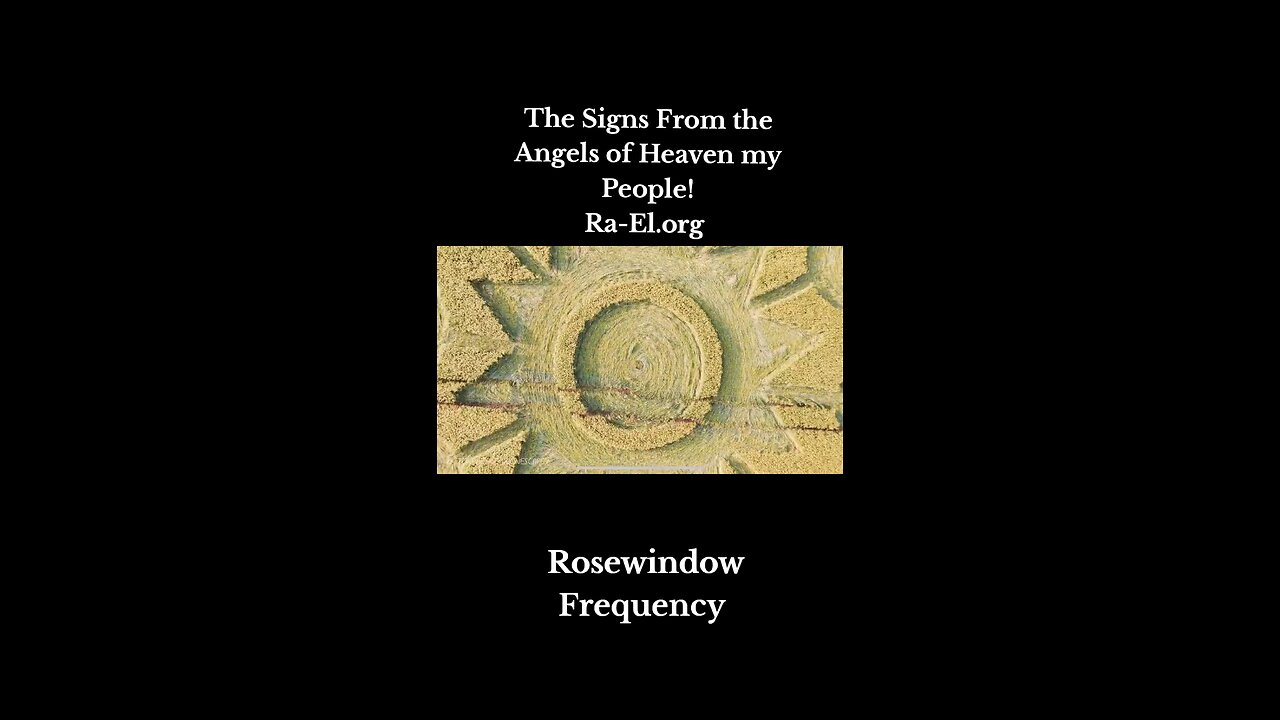Premium Only Content

Rosewindow frequency/resonance/energy
The quote "there is geometry in the humming of the strings" is attributed to Pythagoras, an ancient Greek philosopher and mathematician. It describes his observation that musical harmony is based on mathematical ratios. Specifically, the lengths of strings, the tension, and other factors directly relate to the pitch and intervals of the resulting sound. This quote is part of a larger statement, "There is geometry in the humming of the strings, there is music in the spacing of the spheres".
Pythagoras experimented with strings of different lengths and found that when two strings of a certain length ratio were made to vibrate, they produced a harmonious chord or interval. For instance, a string half the length of another would play an octave higher, and strings in ratios of 4:3 and 3:2 would produce a perfect fourth and fifth, respectively.
These ratios (2:1, 4:3, 3:2) are the foundation of Western musical scales and harmonies. Pythagoras believed that music was inherently mathematical and that certain ratios produced pleasing sounds due to their mathematical simplicity.
Pythagoras's theory extended beyond musical instruments to the cosmos, suggesting that the planets also moved in accordance with mathematical ratios, producing a "music of the spheres". This idea, though poetic, reflects his belief in a harmonious and ordered universe governed by mathematical principles.
The physical dimensions of a string instrument, like the length of the string, the distance between the bridge and the nut, and the thickness of the string, all have geometric properties that affect the resulting pitch and quality of the sound.
Pythagoras PDF
https://www.academia.edu/74646356/PYTHAGORAS
-
 3:06:35
3:06:35
Badlands Media
16 hours agoDEFCON ZERQ Ep. 017: Tesla Tech, Ancient Power & The Fight for Human Consciousness
229K53 -
 3:11:56
3:11:56
TimcastIRL
8 hours agoDOJ Launches FULL INVESTIGATION Into TPUSA Antifa RIOT, Media Says Mostly Peaceful | Timcast IRL
254K82 -
 3:16:27
3:16:27
Barry Cunningham
12 hours agoBREAKING NEWS: SOLVING THE HOUSING CRISIS BY UNDERSTANDING VETERANS DAY! AND IT'S MOVIE NIGHT!
81.6K33 -
 8:58:17
8:58:17
SpartakusLIVE
10 hours agoWZ Solos to Start || NEW Battlefield 6 - REDSEC Update Later
26.1K1 -
 1:01:56
1:01:56
ThisIsDeLaCruz
18 hours ago $12.30 earnedInside Kenny Chesney’s Sphere Part 1: Exclusive Backstage Pass
39.1K2 -
 2:09:50
2:09:50
DLDAfterDark
7 hours ago $3.48 earnedA Complete Look Into The Glock "V Series"! Pistol In Hand! VERY GAY!!
23.2K1 -
 7:42
7:42
China Uncensored
15 hours agoIndia Has Surpassed China
48.1K17 -
 8:47
8:47
Hollywood Exposed
13 hours agoJoe Rogan and Zachary Levi DESTROY Gavin Newsom’s Lies About California
30.5K6 -
 2:09:50
2:09:50
BlackDiamondGunsandGear
7 hours agoInside NEW Glock V Models / Whats Next? / You giving up Glock?
35.5K2 -
 2:05:31
2:05:31
Glenn Greenwald
11 hours ago"Former" Al-Qaeda Leader Welcomed to the White House; The "New TikTok" Clamps Down on Israel Critics: With Influencer Guy Christensen; Dave Portnoy Decries Cancel Culture, Unless His Group is Under Attack | SYSTEM UPDATE #545
147K90